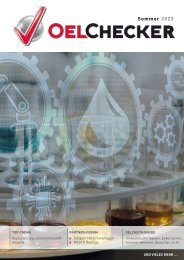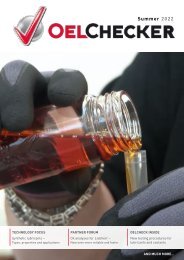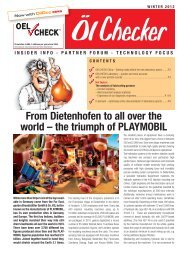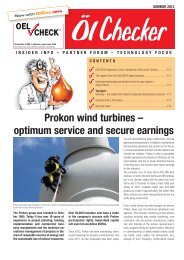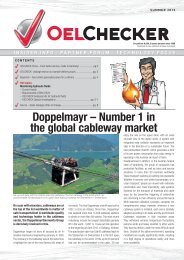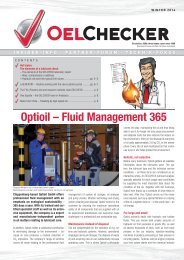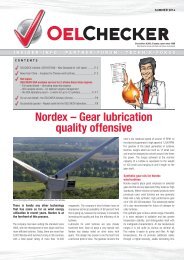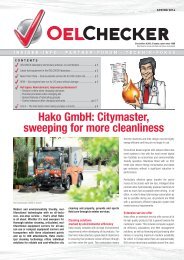OELCHECKER - Spring 2012
> Putzmeister - offering quality worldwide > Analysis kits and gas-tight sample bottles for refrigeration compressor oils > More playtime fun - thanks to OELCHECK! > 2012 customer survey results > The viscosity robot - the new OELCHECK laboratory assistant > Underground maintenance - K+S KALI GmbH workshops > Electrostatic discharges in hydraulic oils and lubricants > Question time: Could lengthy storage times have an influence on your oil samples? > and much more...
> Putzmeister - offering quality worldwide
> Analysis kits and gas-tight sample bottles for refrigeration compressor oils
> More playtime fun - thanks to OELCHECK!
> 2012 customer survey results
> The viscosity robot - the new OELCHECK laboratory assistant
> Underground maintenance - K+S KALI GmbH workshops
> Electrostatic discharges in hydraulic oils and lubricants
> Question time: Could lengthy storage times have an influence on your oil samples?
> and much more...
- No tags were found...
Create successful ePaper yourself
Turn your PDF publications into a flip-book with our unique Google optimized e-Paper software.
Electrostatic discharges in<br />
hydraulic oils and lubricants<br />
OELCHECK conductivity checks increase safety<br />
Lubricants are normally only slightly conductive and therefore sometimes also work as insulators. On the other hand, under certain<br />
circumstances, oils are capable of conducting an electric current. In practice, the electric conductivity of turbine and hydraulic<br />
oils is becoming increasingly important. They are normally only slightly conductive and under appropriate conditions are prone<br />
to becoming electrostatically charged. If there are subsequent discharges, the oil and the system can be damaged. Therefore, to<br />
guarantee maximum safety, in the future OELCHECK will be offering to measure conductivity at different temperatures as a supplementary<br />
individual test.<br />
Electric conductivity is a measure of the electrostatic<br />
chargeability of liquids. Usually it is expressed<br />
as a pS/m (picosiemens/metre = 10 -12 ohm) unit.<br />
As well as on the type of liquid, conductivity also<br />
depends on the concentration of movable charge<br />
carriers. Pure distilled water, for example, is only<br />
slightly conductive. However, if the water contains<br />
„impurities“ such as salts, acids or bases, then its<br />
conductivity increases.<br />
Table 1: API base oil groups<br />
Group I – lightly refined base oils (SN or Solvent Neutral)<br />
Oils with an increased proportion of aromatics, less than 90% saturates.<br />
The VI is between 80 and 120. Additives dissolve relatively easily.<br />
Base for: simple gear and hydraulic oils.<br />
Conductivity: high polarity, best conductivity of over 2,000 pS/m. Values smaller than 2,000<br />
aeroplane<br />
SAE 10W 40 >2,000 Aeroplane hydr. synth 29<br />
Manual transmission gear oil >2,000 Synthetic 9<br />
Paper machine oil (Zn-P) 350 Aircraft PAO 70<br />
Paper machine oil (S-P) 10<br />
Silicate ester (refrigeration) 1,500 Insulating liquids 12




